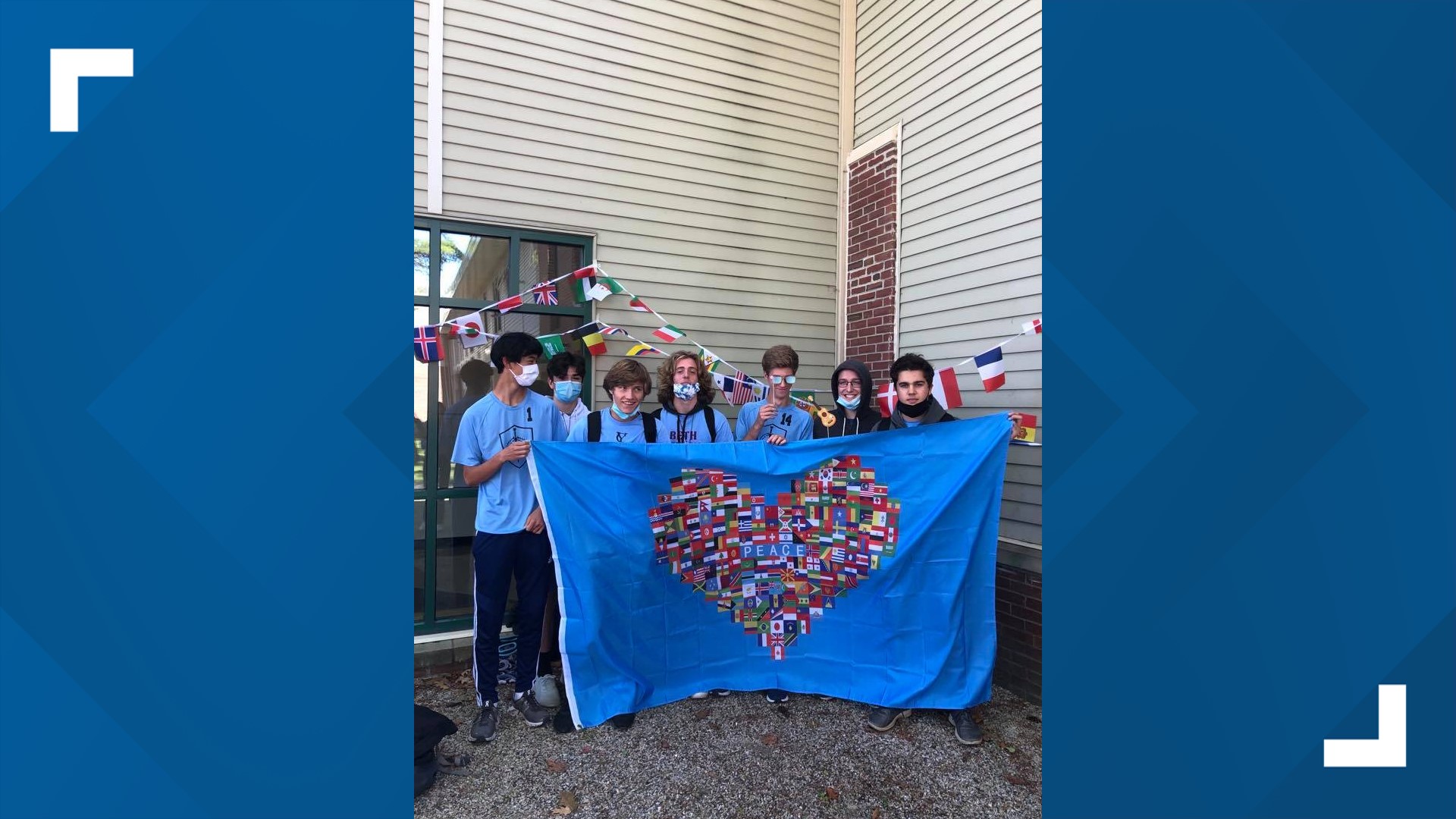YARMOUTH, Maine — On Tuesday, September 21, the world celebrated the 40th International Day of Peace, dedicated by the United Nations to building resilience and creating change. This year, the peace-building movement has roots in Maine, partly because of a national program designed to educate students and teachers.
Since 2015, the "Peace Teachers Program" has been happening through the United States Institute of Peace, an independent, non-partisan, and national organization created and funded by Congress. A handful of American educators (from both middle and high schools) are chosen every year for this year-long program, as they learn how to bring practical peace-building skills into classrooms with education, resources, and support. This year, the selected teachers are from Arkansas, California, Delaware, Michigan, Utah, and Maine.
David Pearl is the educator representing the Pine Tree State. He's a social studies teacher at Yarmouth High School and has been there for 23 years. He's also advisor to the school's Global Action Club. He says he learned about the Peace Teachers Program when he was dropping his son off at college in Washington D.C. and saw the Institute's building. He signed up for some of the Institute's materials, applied for the Peace Teachers Program, and ended up getting accepted.
Now, Pearl meets with the other teachers taking part once a month to share ideas about how to incorporate peace-building into curriculums. The goal of this program is to help students learn how they can play a role in building peace, create more nuanced ways to talk about and understand conflict, and spread a message about why our country is involved in overseas peace-building efforts.
Pearl says he wants to help students find more positive spins and solutions to current events.
"When we think about all the negative things that are happening, at the end of the day, I want our students to leave realizing that peace as possible -- and that in very small ways, or in very big ways, they can make a positive change in the world," said Pearl. "When I think about it, it inspires me. That's why students that I work with every day make me feel positive about our future."
One of those students is Global Action Club member Olivia May. She's a senior now and has been involved with the club since she was a freshman. On Thursday with help from Pearl, she and other students facilitated a "Peace Day Challenge", setting up a table in the school's courtyard during lunch and asking students who they think was a peacebuilder in our community or world.
"Students, and even adults, will often forget that we're all connected in the bigger world, and it's easy to only focus on your own life and life going on in your community, or in your town, or in your city," May said, also noting the club has undertaken a number of other efforts, like packing medical kits for people in need in other countries, putting together school supply bundles, and doing a clothing drive for refugees.
"If people in my generation go into the workforce with the idea of focusing on improving the environment and improving the state of peace in our country and in our world in whatever job they have, I think that's the most beneficial thing that they can do," May said.
For Megan Chabalowski, the senior outreach officer for public education for the U.S. Institute of Peace, involvement among the youth is what the Peace Teachers Program is geared toward achieving.
"Young people can make a real difference, but they need the knowledge and the skills to do so," Chabalowski said. "There are practical, conflict-resolution, peace-building skills that they can be learning to be really active in their communities and around their world right now."
The Peace Teachers Program kicked off with the Peace Day Challenge. It will continue through next spring, when Pearl and his students will present everything they have learned as a result of the program.

